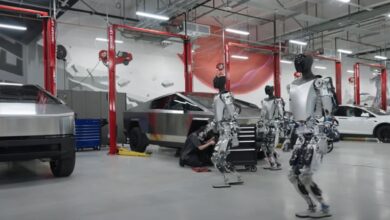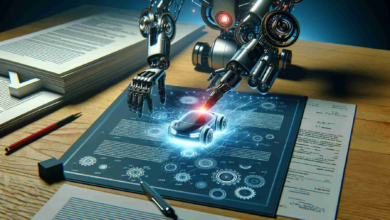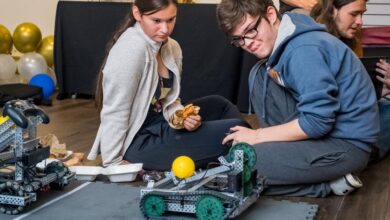What’s New? – Robotics & Automation News

Healthcare robots are transforming medical care by taking on routine tasks, enhancing surgical precision, and offering emotional support to patients.
These machines range from surgical assistants to service robots that deliver medication and companionship robots that interact with patients.
Their integration into healthcare settings is making care delivery more efficient and humane, promising better outcomes and improved healthcare experiences.
Advancements in Surgical Robotics
New Technologies in Robotic Surgery
Cutting-edge robotic systems, such as the da Vinci Surgical System, enhance surgical precision and control, enabling minimally invasive procedures that are particularly effective for complex conditions like aortic valve stenosis disease.
These technologies reduce the need for large incisions, which helps decrease recovery time and the risk of complications.
Thus, they shorten hospital stays and improve outcomes for patients suffering from aortic valve stenosis.
Impact on Patient Recovery
With computer-guided surgery, the patient will often recuperate more swiftly, experience less pain, and have less conspicuous surgical scars.
These robots, by eliminating the physical trauma of surgery, are potentially a leading technology to achieve the finest outcome in postoperative healing thus, patients can resume their normal activities soon with less pain and discomfort.
Robots for Rehabilitation and Assistance
Enhancing Physical Therapy with Robots
The role of robotic systems is a key element in physical therapy treatment where the patient aims to restore mobility and strength after injuries or operations.
In this way, these robots take the lead and support patients by guiding them through the exercise with precision, thus allowing each movement to be correctly done to facilitate recovery.
Whether doing it in four months or four hours, we can ensure that the patient will have safe exercises, which decreases the risk of re-injury.
Assistive Robots in Daily Life
Assistive robots are becoming increasingly useful for those with disabilities or the elderly, as they improve their quality of life by assisting them with various activities.
These robots help with standing, walking, and other mobility duties, and they can also handle prescriptions.
Assistive robots increase independence and improve the quality of life for many people by making everyday tasks more manageable and safe.
Innovations in Hospital Service Robots
Streamlining Hospital Logistics
Patient care robots in clinics are transforming the day-to-day operations of hospitals by replacing a variety of tedious jobs with ways to run errands and transport specimens to laboratories, in addition to sterilization.
These robot systems could be quite useful. Thus, medical personnel can maximize their patient care time.
When robots carry out such duties, they can minimize human mistakes, help reduce expenditures, and ensure that the right kinds of medical samples are handled with proper care and concern.
It not only enhances and smoothens the workflow but also the standards of hygiene and much higher patient safety are achieved.
Robots in Patient Interaction and Monitoring
Innovative robots monitoring patients’ health are increasingly accompanying them. These robots use sensors and AI to identify patient changes and notify healthcare workers of critical needs.
This feature improves responsiveness and customisation, ensuring patients receive prompt care. Additionally, these robots can socialize patients in long-term care settings, reducing isolation and improving mental health.
The Role of AI and Emotional Support Robots
AI Enhancements in Healthcare
Artificial intelligence (AI) in healthcare robots enables more accurate diagnoses and personalized treatment plans.
AI algorithms analyze data far quicker than humans can, helping to identify patterns that predict health issues before they become severe.
Emotional Support Robots
Robots are increasingly used for emotional support in healthcare settings, particularly in long-term care facilities.
These robots can engage with patients through conversation, games, and social activities, helping to reduce feelings of loneliness and improve mental health.
Challenges and Future Prospects in Healthcare Robotics
Overcoming Technical and Ethical Challenges
deployment of robots into the realm of healthcare particularly comes with technical challenges in the way of ensuring reliability and safety as well as ethical questions on the topics of privacy and of the people losing their jobs open up.
Dealing with these problems is noticeably significant for the overall development of robotic technology in medical societies.
The Future of Robotic Healthcare
Healthcare robots could and certainly will move mountains, as revolutionary breakthroughs will always lead to more advanced systems and fully autonomous systems that can cope with each robot’s specific requirements.
Such breakthroughs are anticipated to further exchange patient care, make treatment more productive and comprehensible, and unlock a new era of clinical application.
Conclusion
Robotics are becoming increasingly important in improving patient care, streamlining operations, and tackling the issues of an overworked healthcare system.
These technologies have a huge influence, from precise surgical robots to daily assistance devices.
To safely and fairly benefit from robotic healthcare, complex technical and ethical challenges must be addressed.
These breakthroughs will make healthcare more efficient, personalized, and accessible, ushering in a new age in medical science and patient care.



